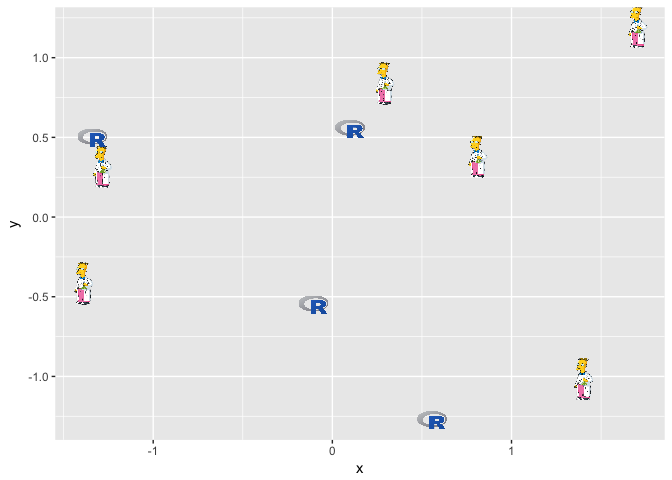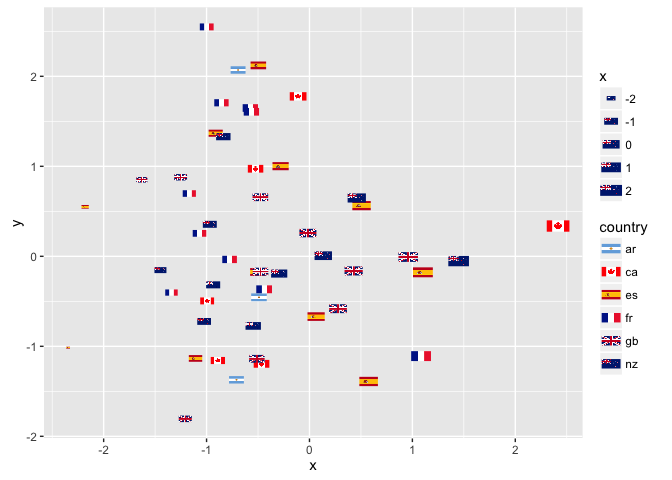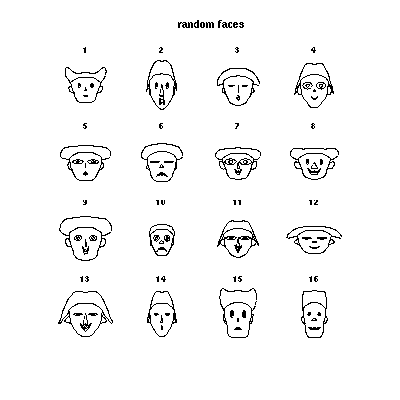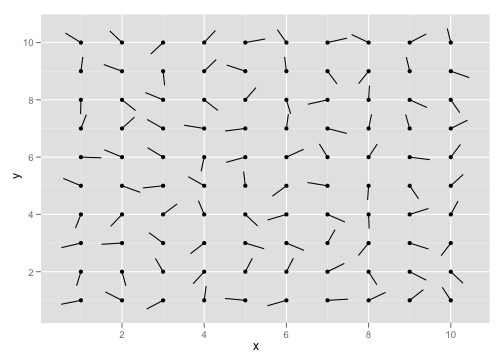Here's a minimalist geom to display raster images instead of points,
library(ggplot2)
library(grid)
## replace by a named list with matrices to be displayed
## by rasterGrob
.flaglist <- list("ar" = matrix(c("blue", "white", "blue"), 1),
"fr" = matrix(c("blue", "white", "red"), 1))
flagGrob <- function(x, y, country, size=1, alpha=1){
grob(x=x, y=y, country=country, size=size, cl = "flag")
}
drawDetails.flag <- function(x, recording=FALSE){
for(ii in seq_along(x$country)){
grid.raster(x$x[ii], x$y[ii],
width = x$size[ii]*unit(1,"mm"), height = x$size[ii]*unit(0.5,"mm"),
image = .flaglist[[x$country[[ii]]]], interpolate=FALSE)
}
}
scale_country <- function(..., guide = "legend") {
sc <- discrete_scale("country", "identity", scales::identity_pal(), ..., guide = guide)
sc$super <- ScaleDiscreteIdentity
class(sc) <- class(ScaleDiscreteIdentity)
sc
}
GeomFlag <- ggproto("GeomFlag", Geom,
required_aes = c("x", "y", "country"),
default_aes = aes(size = 5, country="fr"),
draw_key = function (data, params, size)
{
flagGrob(0.5,0.5, country=data$country, size=data$size)
},
draw_group = function(data, panel_scales, coord) {
coords <- coord$transform(data, panel_scales)
flagGrob(coords$x, coords$y, coords$country, coords$size)
}
)
geom_flag <- function(mapping = NULL, data = NULL, stat = "identity",
position = "identity", na.rm = FALSE, show.legend = NA,
inherit.aes = TRUE, ...) {
layer(
geom = GeomFlag, mapping = mapping, data = data, stat = stat,
position = position, show.legend = show.legend, inherit.aes = inherit.aes,
params = list(na.rm = na.rm, ...)
)
}
set.seed(1234)
d <- data.frame(x=rnorm(10), y=rnorm(10),
country=sample(c("ar","fr"), 10, TRUE),
stringsAsFactors = FALSE)
ggplot(d, aes(x=x, y=y, country=country, size=x)) +
geom_flag() +
scale_country()
![enter image description here]()
(output from the ggflags package)





ggimage. Would highly appreciate if you give an example to use image from computer. Thanks – Skirr